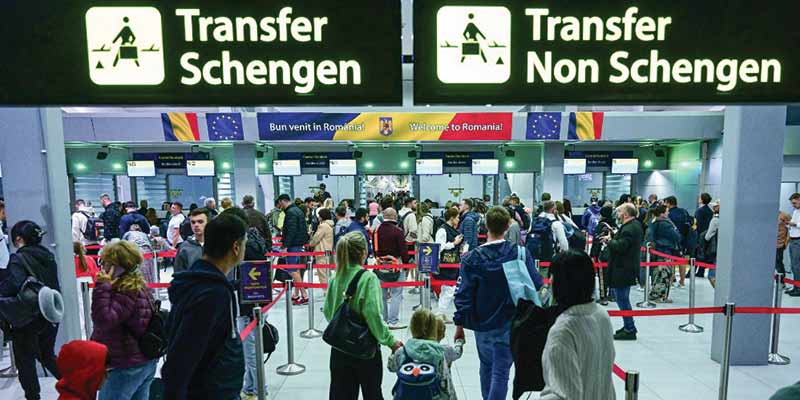- World
- Apr 24
Explainer - What is Schengen visa?
• Frequent Indian travellers to Europe will now be able to apply for multiple entry Schengen visa of up to five years.
• On April 18, the European Commission adopted specific rules on the issuing of multiple entry visas to Indian nationals, which are more favourable than the standard rules of the visa code that applied to date.
• The new visa ‘cascade’ regime for Indian nationals residing in India who apply for Schengen (short-stay) visas in India will provide easier access to visas with multi-year validity for travellers with an established travel history.
• Indian nationals can now be issued long-term, multi-entry Schengen visas valid for two years after having obtained and lawfully used two visas within the previous three years.
• The two-year visa will normally be followed by a five-year visa, if the passport has sufficient validity remaining. During the validity period of these visas, holders enjoy travel rights equivalent to visa-free nationals.
• The changes in the visa norms came in the context of strengthened relations under the EU-India common agenda on migration and mobility, which seeks comprehensive cooperation on migration policy between the two sides.
• Schengen visa allow the holder to travel freely in the Schengen area for short stays of a maximum of 90 days in any 180-day period. The visas are not purpose-bound, but they do not grant the right to work.
Schengen Area
• Originally, the concept of free movement was to enable the European working population to freely travel and settle in any EU State, but it fell short of abolishing border controls within the Union.
• It started as an inter-governmental project between five EU countries — France, Germany, Belgium, the Netherlands and Luxembourg — and has gradually expanded to become the largest free travel area in the world.
• Schengen is the name of a small village in Luxembourg, on the border with Germany and France, where the Schengen Agreement and the Schengen Convention were signed in 1985 and in 1990 respectively.
• The implementation of the Schengen Agreements started in 1995.
• The developments brought about by the Schengen Agreements have now been incorporated into the body of rules governing the European Union.
• The border-free Schengen Area guarantees free movement to more than 425 million EU citizens, along with non-EU nationals living in the EU or visiting the EU as tourists, exchange students or for business purposes (anyone legally present in the EU).
• Free movement of persons enables every EU citizen to travel, work and live in an EU country without special formalities.
• Schengen underpins this freedom by enabling citizens to move around the Schengen Area without being subject to border checks.
• Today, the Schengen Area encompasses most EU countries, except for Cyprus and Ireland.
• The Schengen Area consists of 29 European countries of which 25 are EU states.
• The Schengen provisions abolish checks at EU’s internal borders, while providing a single set of rules for controls at the external borders applicable to those who enter the Schengen area for a short period of time (up to 90 days).
• Any person, irrespective of their nationality, may cross the internal borders without being subjected to border checks. However, the competent national authorities can carry out police checks at internal borders and in border areas, provided that such checks are not equivalent to border checks.
• While having abolished their internal borders, Schengen countries have also tightened controls at their common external border on the basis of common Schengen rules to ensure the security of those living or travelling within the Schengen Area.
• The set of rules governing the Schengen Area is called Schengen Borders Code.
• Every day around 3.5 million people cross internal borders for work or study or to visit families and friends, and almost 1.7 million people reside in one Schengen country while working in another.
• Europeans make an estimated 1.25 billion journeys within the Schengen Area every year, which also greatly benefits the tourism and cultural sector.
• The Schengen Area brings significant economic benefits to all citizens and businesses in its participating states. It is designed to be the bedrock of the European Union and of the single market as a whole.
EU countries issuing Schengen visas:
• Austria
• Belgium
• Bulgaria
• Croatia
• Czech Republic
• Denmark
• Estonia
• Finland
• France
• Germany
• Greece
• Hungary
• Italy
• Latvia
• Lithuania
• Luxembourg
• Malta
• Netherlands
• Poland
• Portugal
• Romania
• Slovakia
• Slovenia
• Spain
• Sweden.
Non-EU countries issuing Schengen visas:
• Iceland
• Liechtenstein
• Norway
• Switzerland.
EU countries not issuing Schengen visas:
• Cyprus
• Ireland.
Manorama Yearbook app is now available on Google Play Store and iOS App Store


